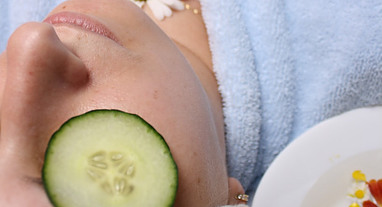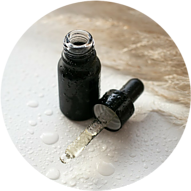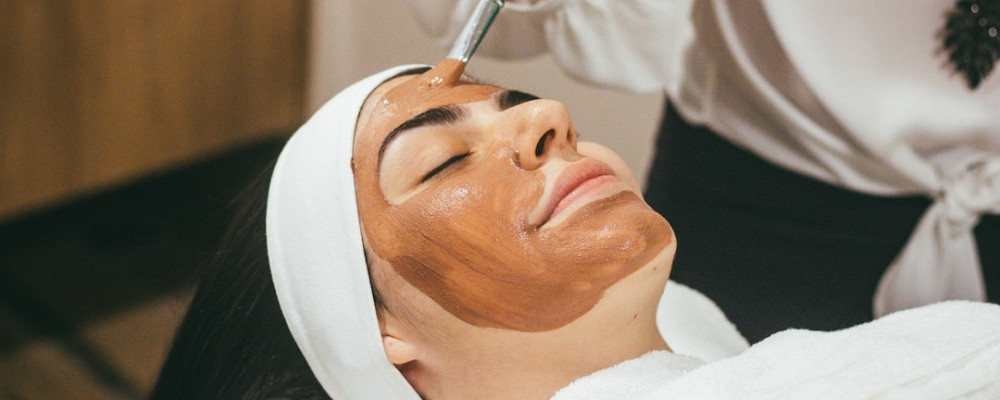
What is The Best Skin Care Regimen for Aging Skin?

Every day, people across the country seek advice from professionals, friends, and family, questioning, “What is the best skin care regimen for aging skin?” In prior articles, we covered topics such as identifying skin types, comprehending ingredients, and avoiding harmful substances. Now, we will delve into the question of what is the best skincare regimen for aging skin for optimal results, how to apply your products for ample effectiveness, and how to incorporate your new skincare regimen into your daily routine seamlessly.
Recap: Getting to Know Your Skin…
Before diving into a skincare routine, taking the time to understand your skin is essential for optimal results. Identifying your skin type and recognizing any specific concerns or issues it may have allows you to tailor your routine accordingly.
Determining your skin type involves assessing factors such as oiliness, dryness, sensitivity, and overall balance. This understanding helps you select products and ingredients that cater to your skin’s unique needs. For instance, oily skin may benefit from oil-free or mattifying products, while dry skin requires intense hydration and moisturization.
Additionally, identifying specific concerns or issues helps you address them effectively. These concerns could range from signs of aging like fine lines, wrinkles, and sagging skin to issues like acne, hyperpigmentation, or sensitivity. By pinpointing these problems, you can choose targeted products and treatments that work towards resolving them.
Once you clearly understand your skin type and concerns, you can curate a skincare regimen that includes suitable cleansers, toners, serums, moisturizers, and treatments. Tailoring your routine to your skin’s needs ensures that you are addressing its specific requirements and promoting a healthier complexion.
Did you know…?
Surprising as it may sound, research suggests that we touch our faces approximately 23 times per hour! Yikes! This revelation highlights the significance of regular skin care, as everything we come into contact with likely carries bacteria that can be transferred to our faces. By sticking to a consistent skincare routine, we can effectively fight common facial skin concerns like acne, blemishes, dryness, and irritation. Such a routine helps minimize the occurrence of these issues, leading to a more balanced and healthier complexion overall.
The skin on your face is distinct in composition and characteristics compared to the skin on the rest of your body. It is generally more delicate and thinner, making it more susceptible to various external factors and potential damage. These factors make it prone to issues like dryness, sensitivity, and accelerated signs of aging. Also, the skin on the face is constantly exposed to environmental aggressors, such as UV radiation, pollution, and harsh weather conditions, which can further impact its health and appearance. Due to its unique properties, facial skin requires specific attention and care to maintain its health, vitality, and youthful appearance.
Additionally, since the skin is the body’s largest organ, it plays a crucial role in maintaining overall health. Our Skin works as a protective barrier, shielding the body from harmful external elements, such as bacteria, pollutants, and UV radiation. It helps regulate body temperature, prevents excessive water loss, and acts as a sensory organ, allowing us to feel touch, heat, and cold. Proper skin care practices, including cleansing, moisturizing, and sun protection, help keep the skin healthy, vibrant, and functioning optimally.
What To Use & In What Order…

The best skincare regimen can vary depending on individual skin types, concerns, and preferences. However, certain fundamental steps are generally recommended for a comprehensive skincare routine. Here’s a basic outline of a skincare regimen in order of application and the reason each step is important:
Cleansing: Start with a gentle cleanser that doesn’t strip away natural oils. Look for ingredients like hyaluronic acid or ceramides to help retain moisture. Cleansing your skin is crucial for removing dirt, oil, impurities, and pollutants that accumulate throughout the day. It helps maintain a clean canvas for the following products to be absorbed effectively.
Exfoliation: Regular exfoliation can help remove dead skin cells and improve skin texture. Choose a gentle exfoliant that suits your skin type, such as a chemical exfoliator with AHAs (alpha hydroxy acids) or BHAs (beta hydroxy acids).
Toning: Use a toner to balance the skin’s pH levels and prepare it for better absorption of subsequent products. Look for toners with hydrating and soothing ingredients like witch hazel, rose water, or chamomile; you can even use apple cider vinegar by diluting 1 part ACV to 2 parts distilled or filtered water.
Serum: Incorporate a serum into your routine to target specific skin concerns. Look for serums containing antioxidants like vitamin C or C&E Ferulic serum, retinol (vitamin A), or peptides for aging skin. These ingredients can help reduce the appearance of wrinkles, promote collagen production, and improve overall skin tone.
Eye Cream: The delicate skin around the eyes often requires special attention. Eye creams are formulated to target concerns like fine lines, dark circles, and puffiness in this area, providing hydration and promoting a youthful appearance. Look for ingredients like hyaluronic acid, caffeine, vitamins C & E, and retinol (vitamin A).
Moisturizer: When choosing a moisturizer, choose one that contains nourishing ingredients like hyaluronic acid, glycerin, or ceramides to provide ample hydration. It’s important to choose a product that offers long-lasting moisturization and supports the skin’s natural barrier function. Additionally, consider your skin type when choosing a moisturizer, as using a formula intended for dry skin would not be suitable for those with an oily skin type.
Sun protection: Sunscreen is a vital step in protecting the skin from harmful UV rays that can lead to premature aging, wrinkles, sunspots, and even skin cancer. Applying broad-spectrum sunscreen with at least SPF 30 should be a daily habit. I recommend a tinted sunscreen as it is proven to have more protection against UV and blue light due to the tint.
Believe it or not, the order in which you apply your skincare products is significant, with the consistency of the product being the key factor. For instance, water-based products absorb faster into the skin than oil-based products. For example, it is not ideal to apply a serum after moisturizer since the thick consistency of the moisturizer can create a barrier, preventing the serum from effectively reaching your skin. To simplify the process, it’s best to apply your products in order of consistency, from thinnest to thickest.
Eaze Your Skin Into a New Routine…
Implementing a new skincare regimen into your daily life requires consistency and a few key steps. Here’s a guide on how to effectively incorporate a new skincare routine:
Research and Educate Yourself:
Familiarize yourself with the products and steps involved in your new skincare regimen. Understand the purpose of each product and how it can benefit your skin. Knowing the benefits will encourage you to use it!
Start with a Patch Test:
Before applying new products to your entire face, perform a patch test on a small area of your skin to check for adverse reactions or sensitivities. This is highly recommended for sensitive skin.
Introduce Products Gradually:
Begin by introducing one new product at a time to your skincare routine. This allows your skin to adapt and reduces the risk of overwhelming or overloading your skin. Give each new product a week or so before introducing another.
Follow the Instructions:
Pay attention to the instructions provided with each product. This includes the amount to use, the frequency of application, and any specific recommendations. For example, some exfoliators indicate to be used only 2-3 times per week.
Cleanse and Prepare:
ALWAYS start your skincare routine by thoroughly cleansing your face to remove dirt, oil, and impurities. This ensures that your skin is clean and ready to absorb the active ingredients in the following products.
Apply Products in the Correct Order:
As mentioned above, apply the products in the order of their consistency, from thinnest to thickest. This allows each product to be absorbed effectively and ensures optimal results. Try to allow at least 30 seconds before the next product application to maximize absorption.
Be Mindful of Sensitivities:
Keep an eye out for any adverse reactions or sensitivities. If you notice any redness, irritation, or discomfort, discontinue the use of the product causing the issue and consult a dermatologist if necessary.
Maintain Consistency:
Stick to your skincare routine consistently for the best results. Skincare is a long-term commitment, and consistent use of products over time yields the most significant benefits. There is no magic wand; there is just time:)
Adjust as Needed:
Pay attention to how your skin responds to the new products. See if you notice positive changes, or if certain products don’t work well for your skin, adjust accordingly.
Be Patient:
It takes time for your skin to adapt to new products and for visible improvements to occur. Give your new skincare routine at least a few weeks to gauge its effectiveness before making any major changes.
Remember, everyone’s skin is unique, and what works for one person may not work for another. If you have specific concerns or questions, consulting with a dermatologist or skincare professional for personalized guidance is always beneficial.
Show Yourself Some Grace…

As we age, our skin undergoes changes that can be challenging to address. It may feel overwhelming to try to reverse the effects accumulated over the years. However, regardless of your age, it’s important not to lose hope. Remember, it took a considerable amount of time for your skin to reach its current state, so show yourself some grace and allow the healing process to take its course. Utilize the knowledge you’ve acquired here, revisit the helpful cheat sheets in my second article, conduct thorough research, and discover the skincare strategies that suit you best. 🙂
As always, I would love your feedback or any questions! Please feel free to leave a comment below:)
-Maricella
*Please remember that the above is solely my opinion based on facts researched and verified by myself, and in no way is it to be used as a medical reference or advice.


